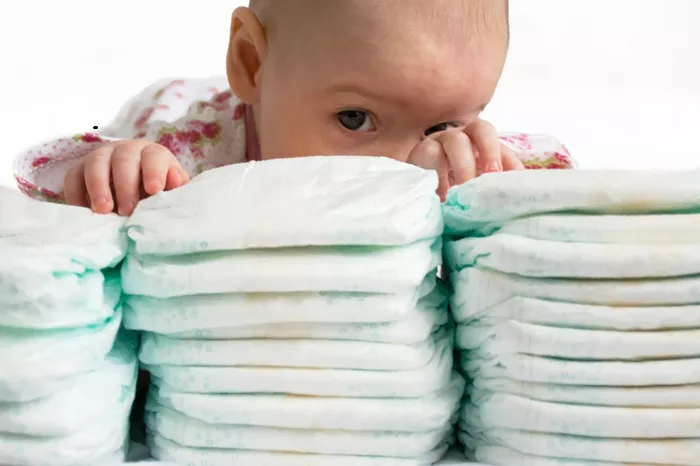Diaper rash is a common issue that many parents face, especially during the early months of their baby’s life. While mild diaper rash is usually manageable with basic care, severe diaper rash requires more attention and intervention. This article will provide guidance on how to address and treat severe diaper rash, ensuring your baby’s comfort and health.
Understanding Severe Diaper Rash
What is Severe Diaper Rash?
Severe diaper rash is characterized by:
Intense Redness: The skin in the diaper area is deeply red and inflamed.
Painful Symptoms: The rash may cause your baby discomfort or pain, leading to fussiness.
Open Sores: Severe rashes can sometimes lead to open sores or blisters.
Spreading: The rash may spread beyond the diaper area to the thighs, stomach, or genitals.
Causes of Severe Diaper Rash
Several factors can contribute to severe diaper rash:
Prolonged Exposure: Extended contact with wet or soiled diapers.
Irritants: Ingredients in baby wipes, soaps, or diaper materials.
Infections: Bacterial or yeast infections can exacerbate the rash.
Allergies: Allergic reactions to diaper materials or creams.
Immediate Steps to Take
1. Change Diapers Frequently
Keeping your baby’s skin clean and dry is crucial.
Regular Changes: Change diapers every 2-3 hours or as soon as they are soiled.
Gentle Cleaning: Use soft wipes or a damp cloth. Avoid rubbing or scrubbing the area.
2. Clean with Care
Proper cleaning is essential to prevent further irritation.
Mild Cleansers: Use a fragrance-free, mild soap if needed. Rinse thoroughly.
Pat Dry: Gently pat the area dry with a soft cloth. Avoid rubbing.
3. Use Barrier Creams
Barrier creams can protect the skin from moisture and irritation.
Choose Wisely: Select creams containing zinc oxide or petroleum jelly. These create a protective layer on the skin.
Application: Apply a generous layer of cream during each diaper change.
4. Allow Air Time
Giving your baby’s skin some air can aid in healing.
Diaper-Free Time: Allow your baby to spend some time without a diaper each day.
Safe Environment: Place a waterproof mat or towel underneath to protect surfaces.
Treating and Managing Severe Diaper Rash
1. Identify and Avoid Irritants
Understanding and removing irritants can help prevent further irritation.
Check Products: Ensure that diapers, wipes, and laundry detergents are free from fragrances and dyes.
Test New Products: Introduce new products gradually to monitor for adverse reactions.
2. Use Medications as Needed
In some cases, additional treatments may be necessary.
Antifungal Creams: If a yeast infection is suspected, an antifungal cream may be required. Consult your pediatrician for recommendations.
Prescription Medications: For severe cases, your doctor may prescribe a medicated cream or ointment.
3. Maintain Proper Hygiene
Ongoing hygiene practices are essential in managing and preventing severe diaper rash.
Regular Baths: Give your baby regular baths using mild, non-irritating soap.
Avoid Powders: Talcum powders can irritate the skin further and are best avoided.
4. Monitor for Complications
Be aware of potential complications and seek medical advice if necessary.
Signs of Infection: Watch for signs of infection such as increased redness, swelling, pus, or fever.
Consult a Pediatrician: If the rash does not improve with home treatment, consult your pediatrician for further evaluation and advice.
Preventing Future Diaper Rashes
1. Choose the Right Diapers
The type of diaper you use can impact your baby’s skin health.
Breathable Diapers: Opt for breathable diapers that allow air circulation.
Proper Fit: Ensure that diapers fit properly to avoid chafing or irritation.
2. Maintain a Consistent Routine
Consistency in diaper care can prevent future issues.
Regular Changes: Adhere to a regular diaper changing schedule.
Hygiene Practices: Continue using gentle cleaning methods and barrier creams as part of your routine.
3. Stay Informed
Keeping up with the latest recommendations can help you manage diaper rash effectively.
Educate Yourself: Read up on new products and treatments that may benefit your baby’s skin.
Seek Professional Advice: Regularly consult with your pediatrician for guidance on skin care and diaper rash prevention.
See also: Do Hospitals Give You Baby Clothes?
Conclusion
Managing severe diaper rash involves a combination of immediate care, ongoing prevention, and vigilance. By changing diapers frequently, using gentle cleaning methods, applying barrier creams, and allowing for air time, you can help alleviate your baby’s discomfort and promote healing. Identifying and avoiding potential irritants, using appropriate treatments, and maintaining proper hygiene are essential steps in managing severe diaper rash. With the right approach, you can effectively address and prevent severe diaper rash, ensuring your baby remains comfortable and healthy. If you have concerns or if the rash persists, always consult your pediatrician for professional advice and treatment.


